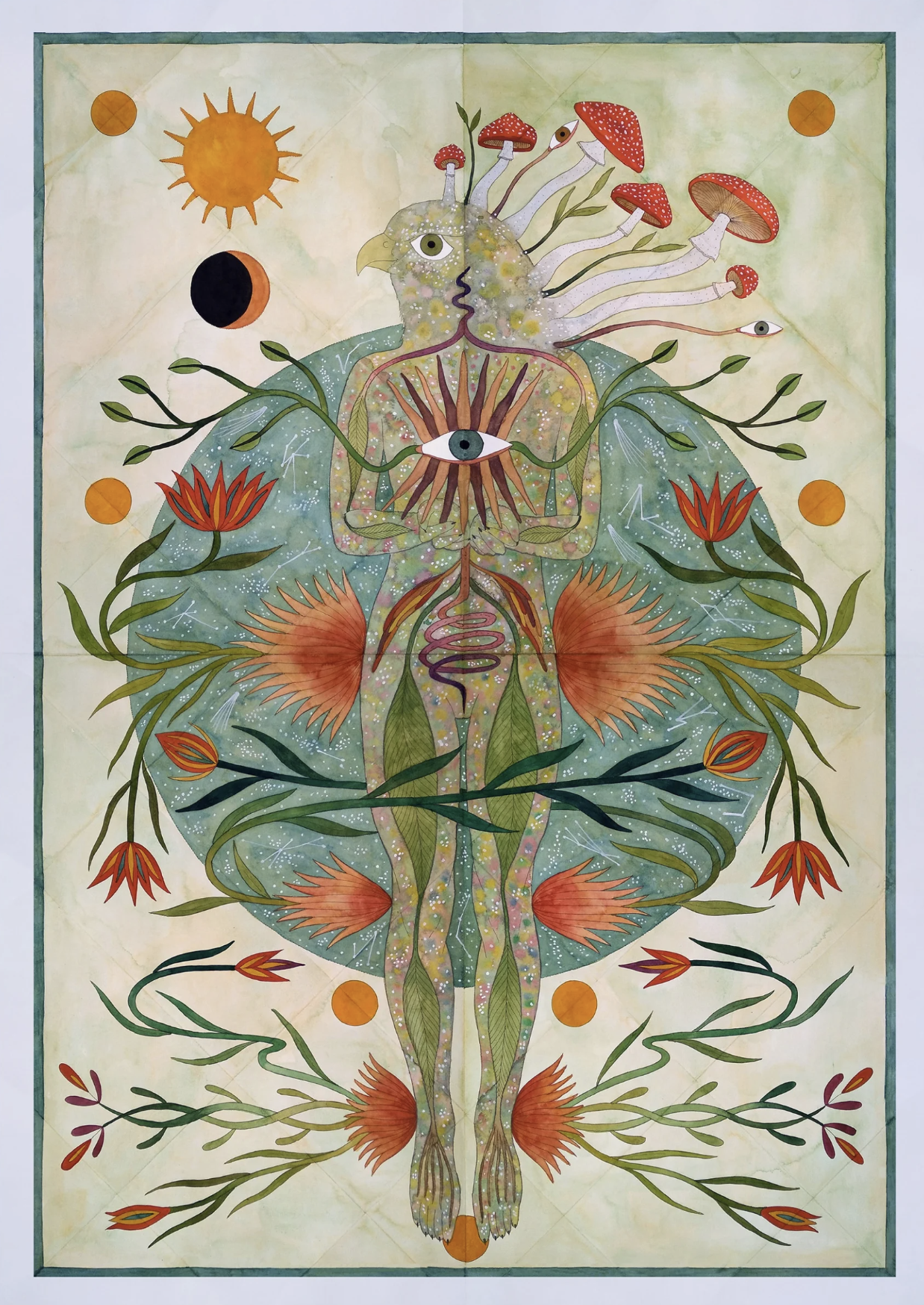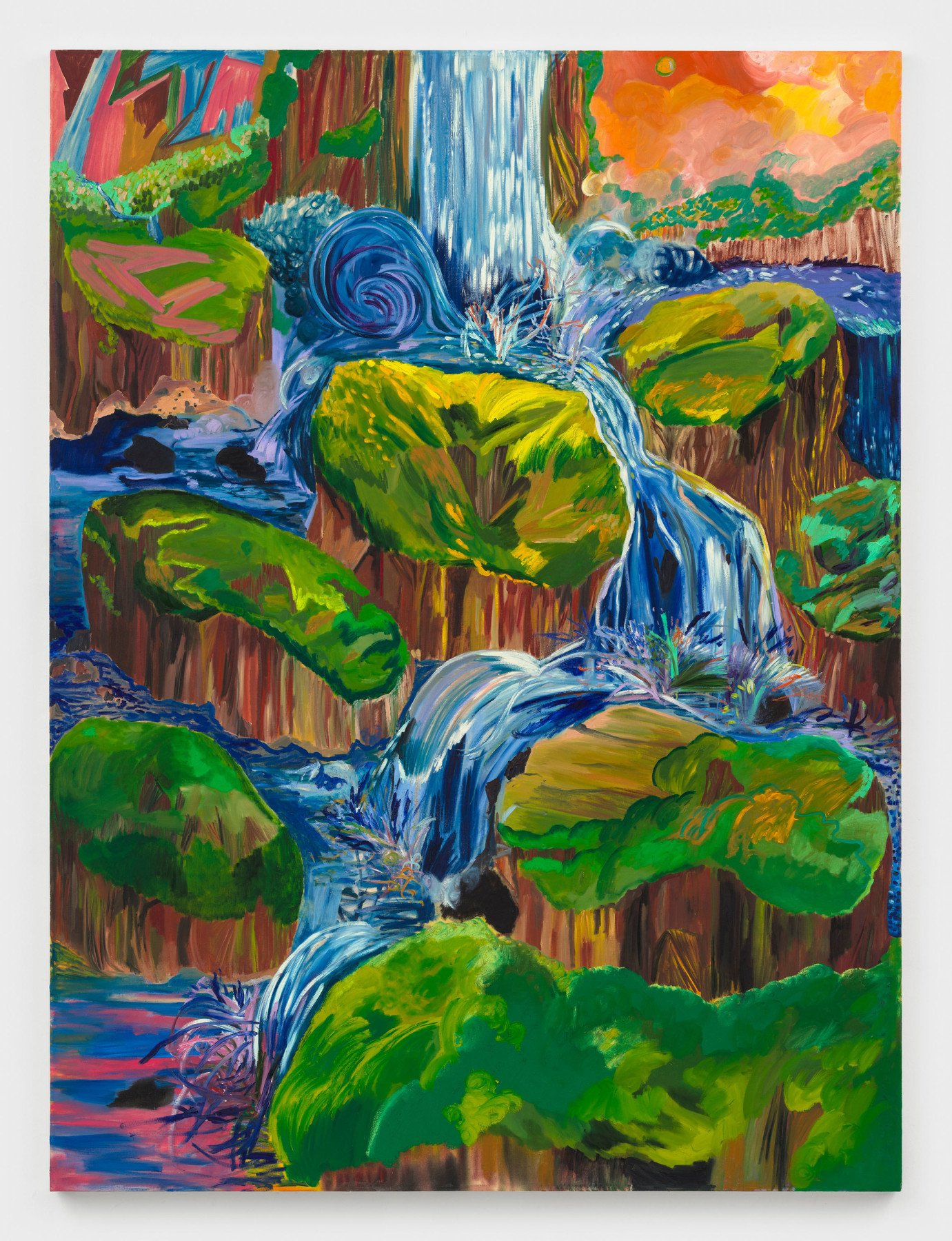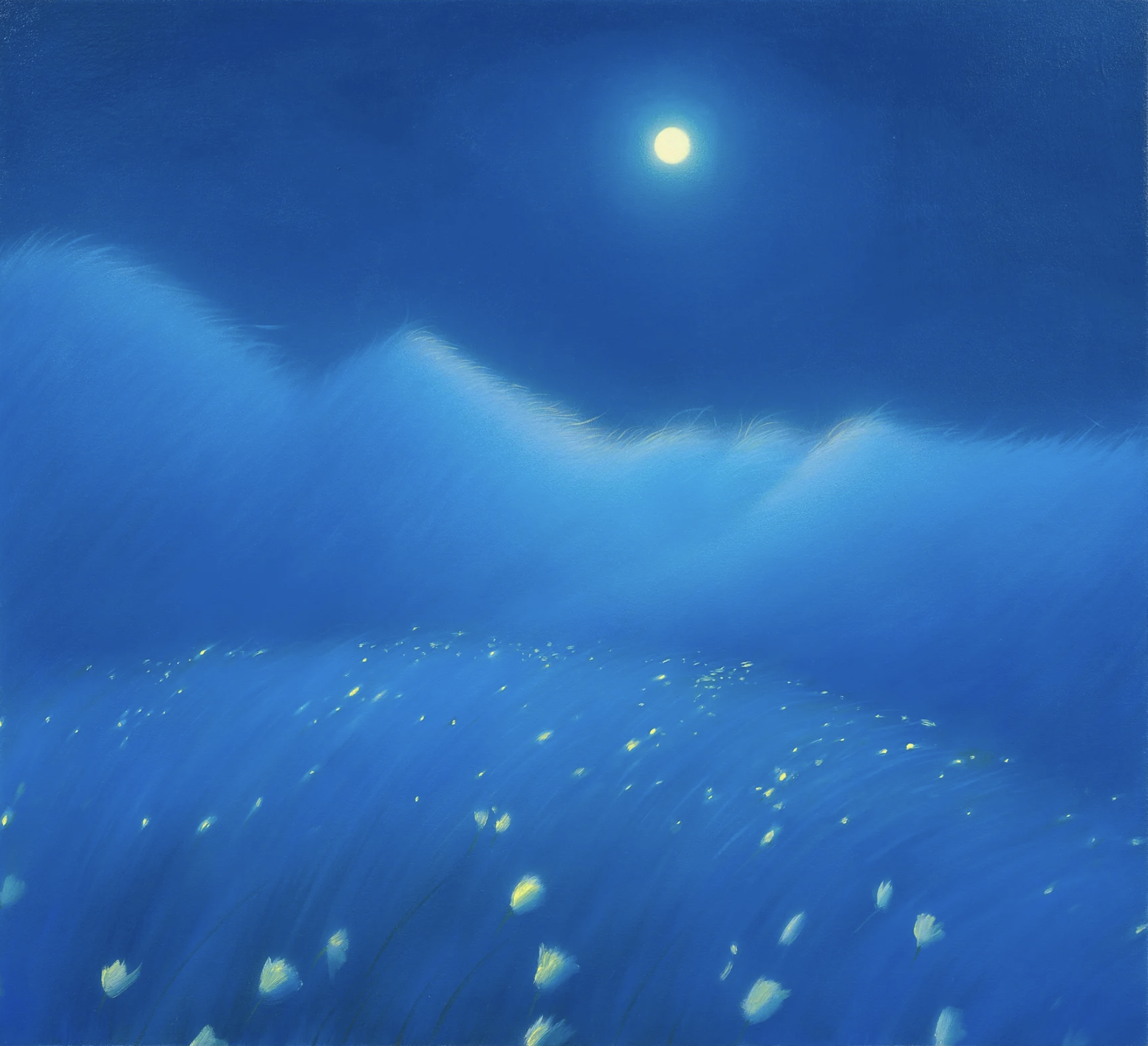Greg Parma Smith: Sky Tombs
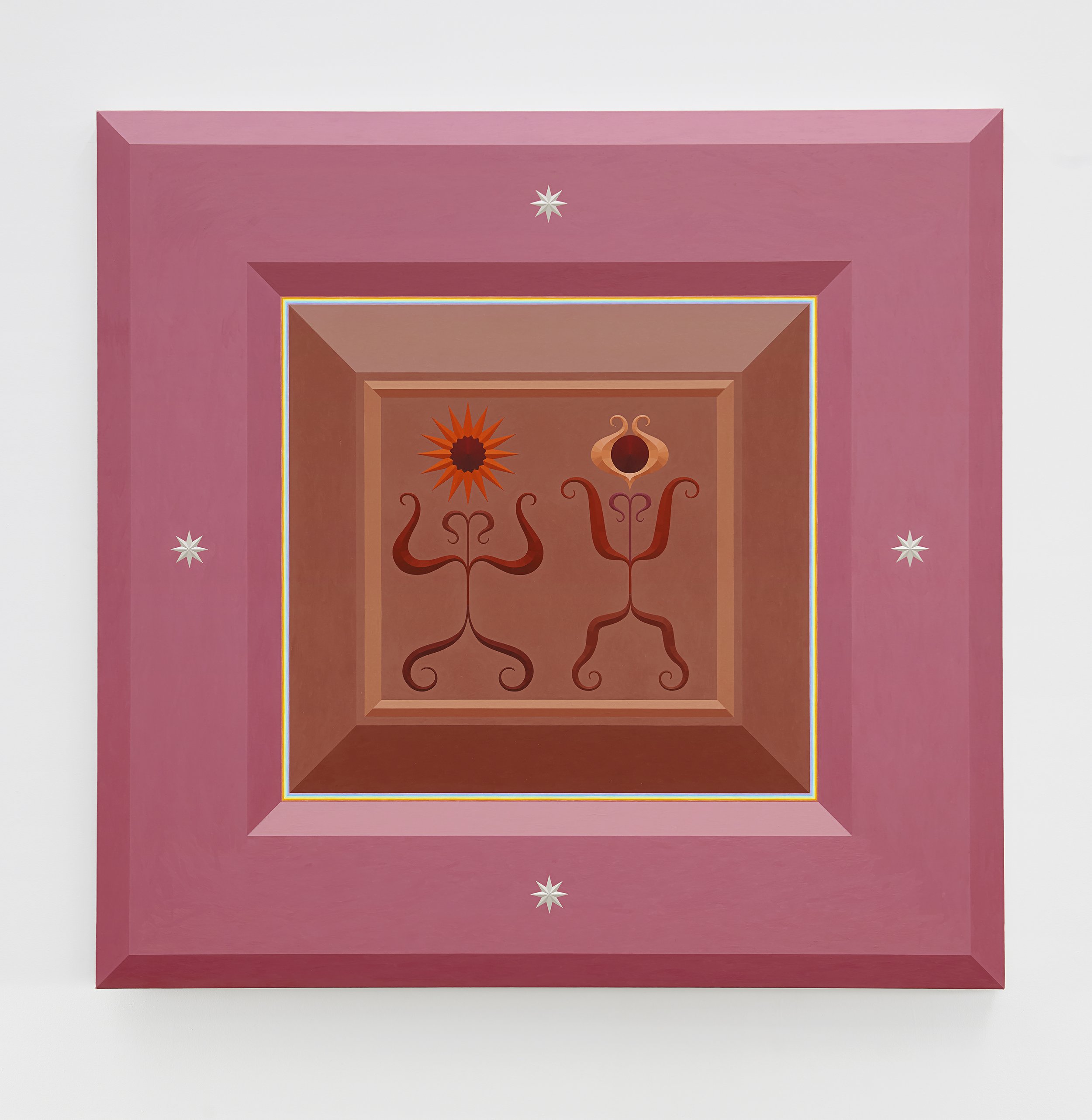
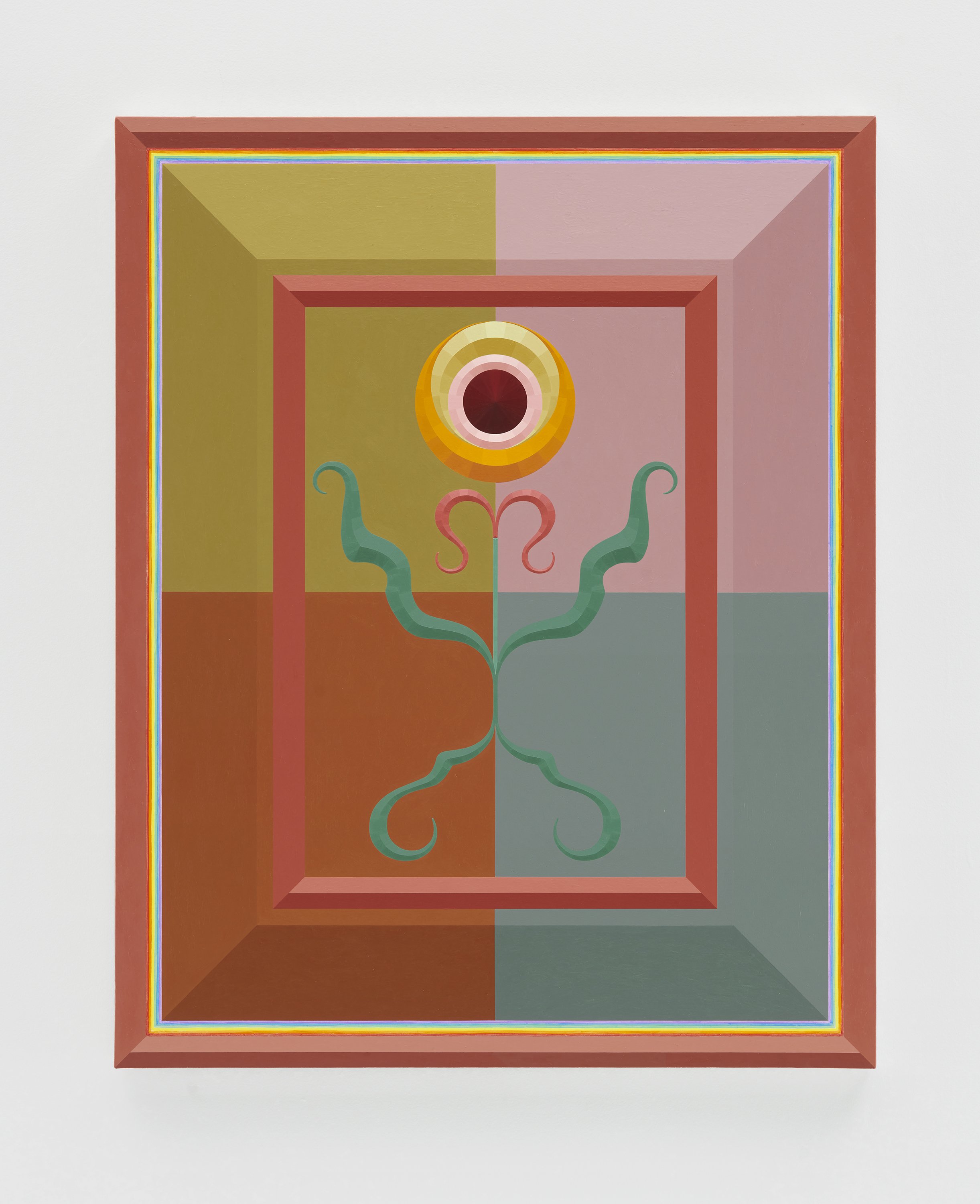
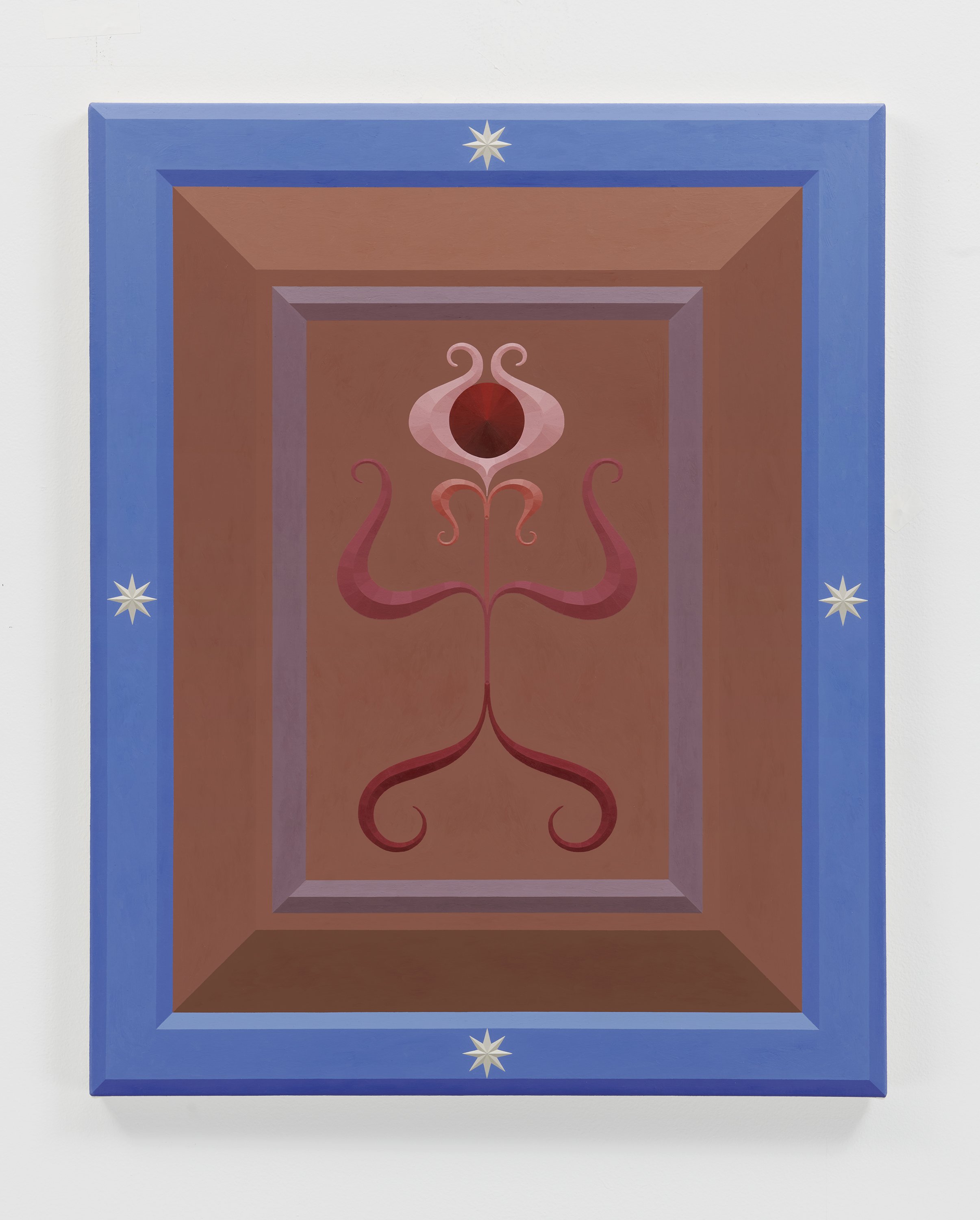
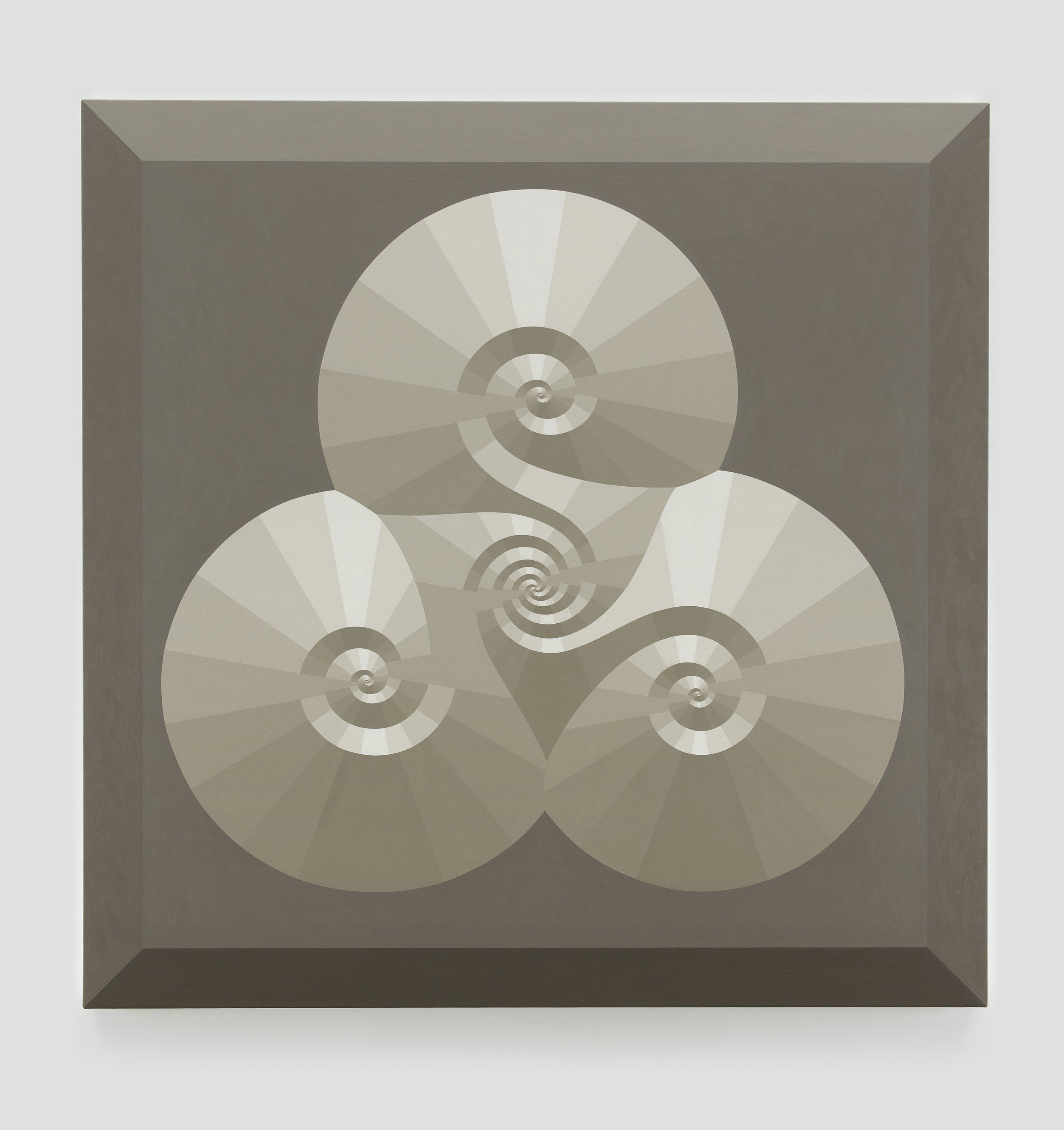
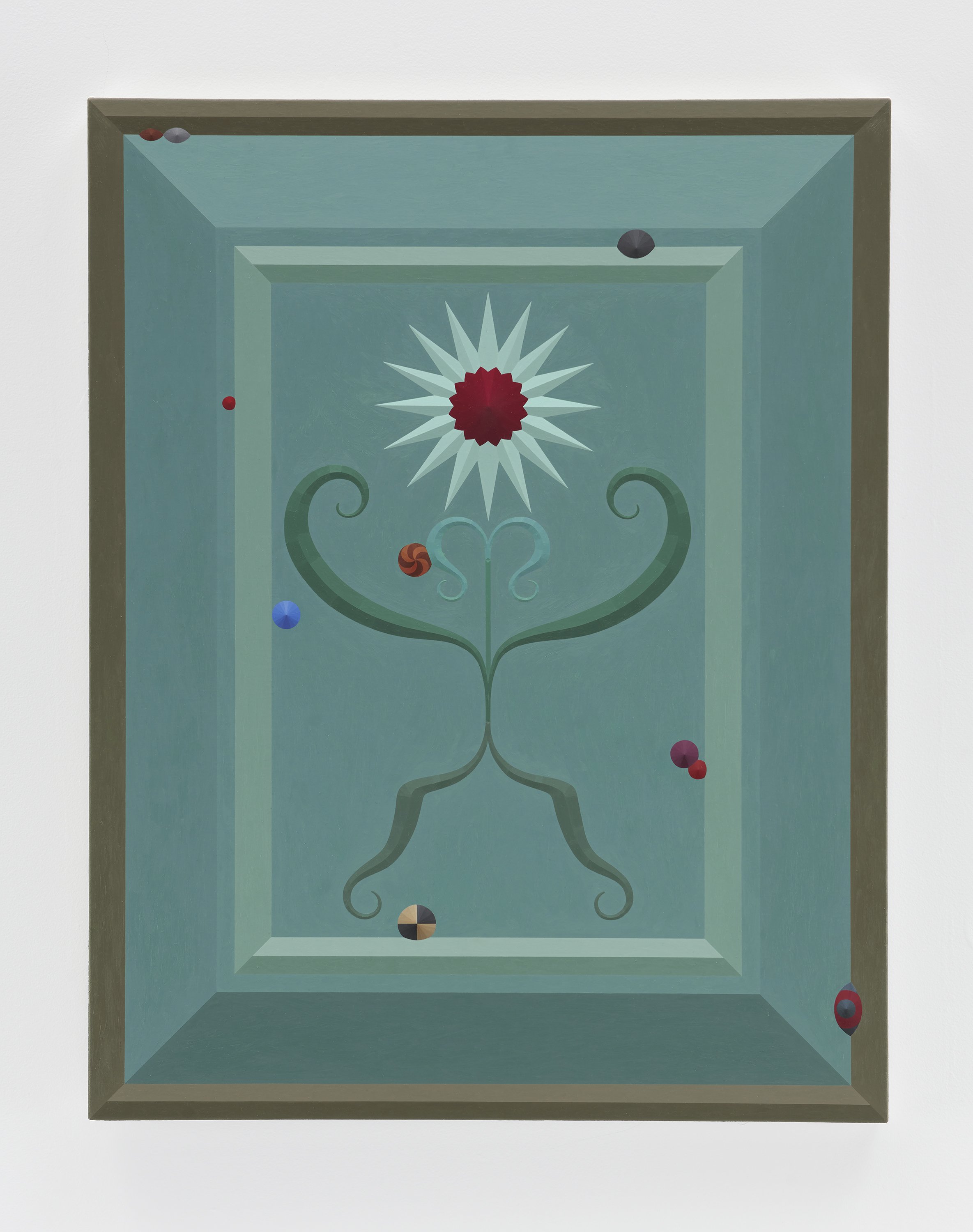
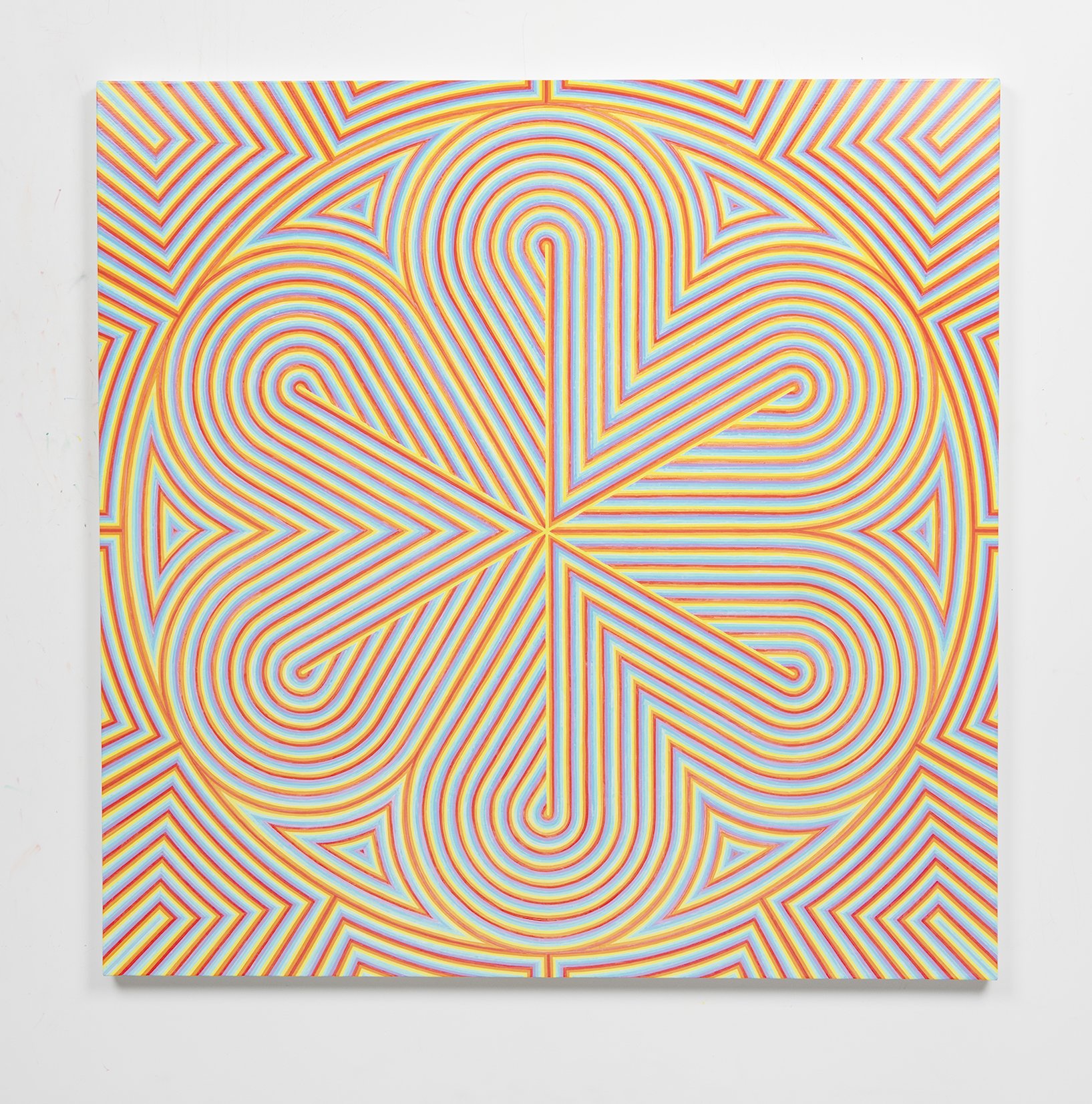

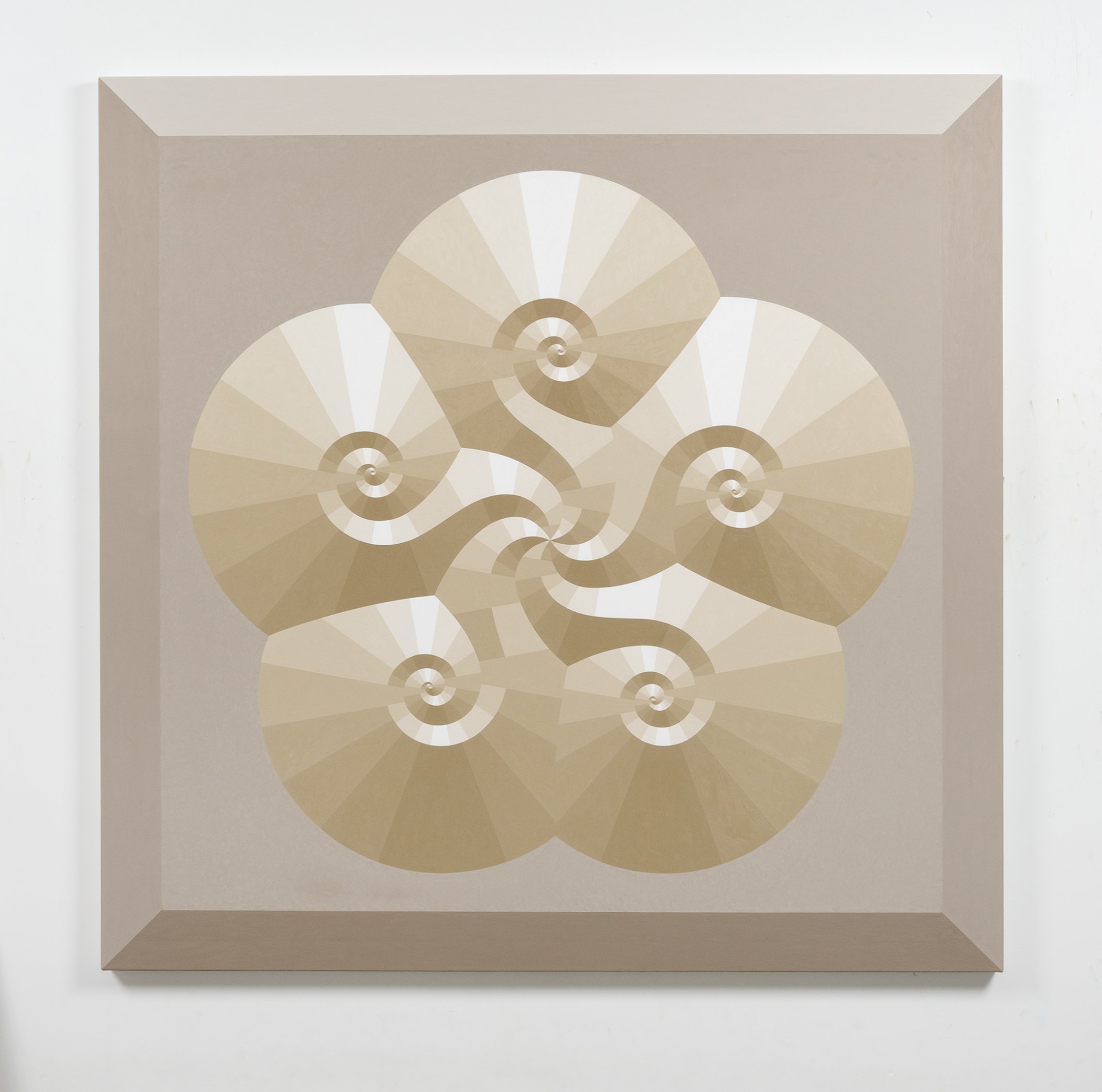
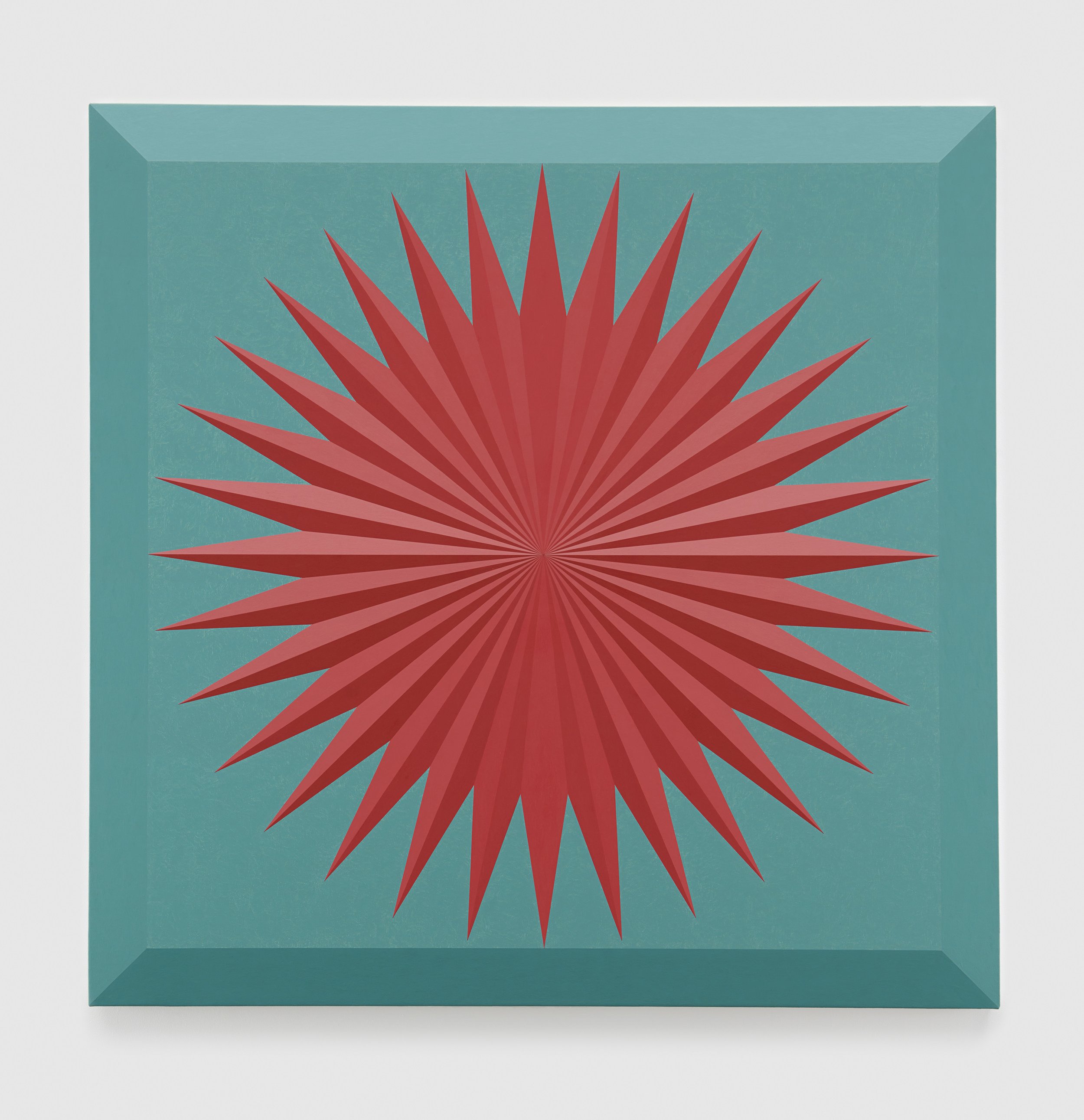
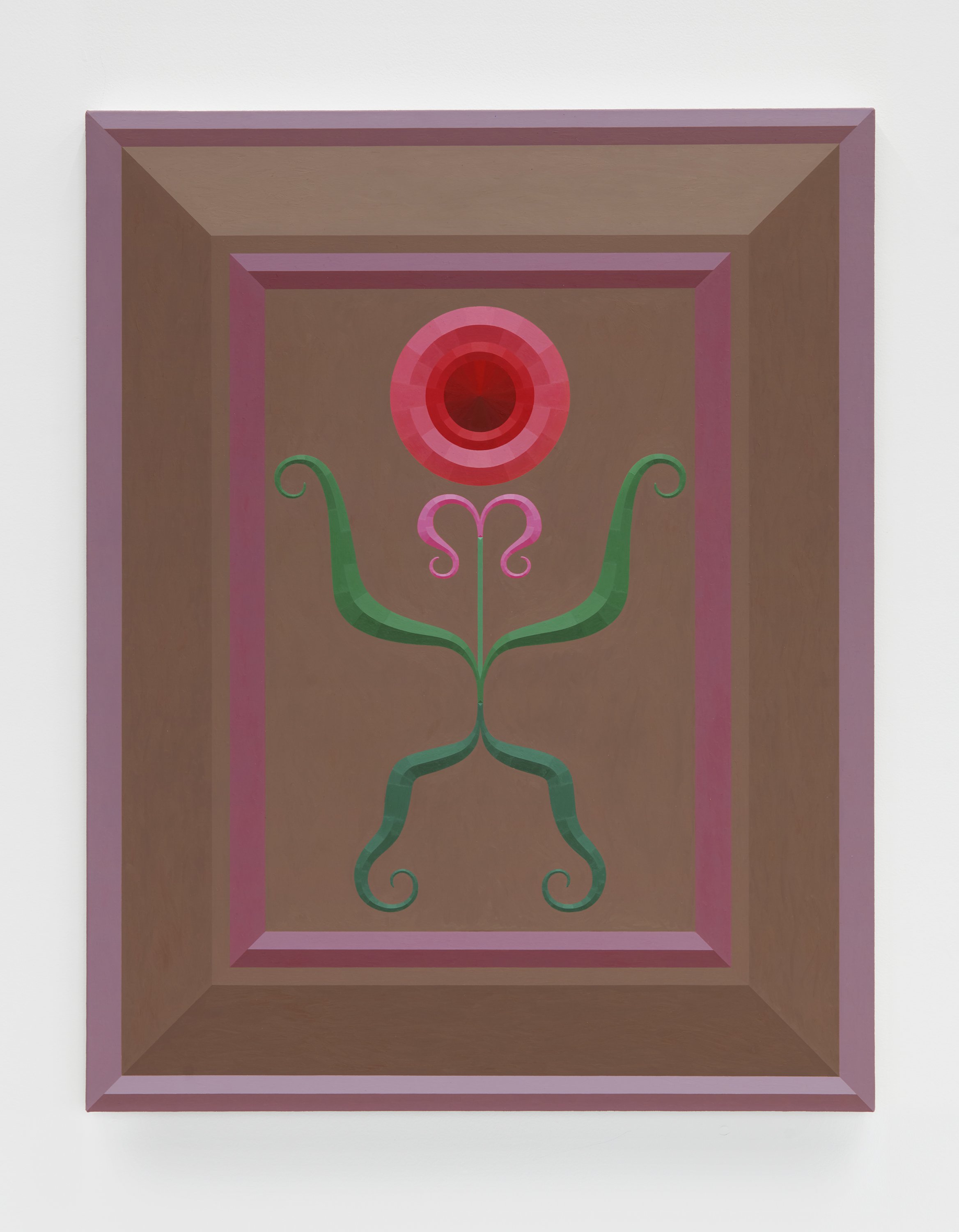
David Lewis is pleased to present Greg Parma Smith, Sky Tomb. This is the artist’s fourth exhibition with the gallery.
The 10 new paintings on view feature suns, anthropomorphic flowers, and clouds. One painting depicts a rainbow portal which can be imagined as the structure that lies behind the sun, or a gateway to a new dimension. The rainbow motif is also present as a thin line in some of the flower paintings. Smith’s flowers don’t relate to specific varieties but are instead ‘universal’ and imagined as if they were extraterrestrial creatures existing on their own and entombed in geometry as if they were hieroglyphs. In the same way that the flowers are rationalized abstractions of organic shapes, the clouds are similarly crystalline, archetypical, and pinned like heavy specimens against neutral backgrounds. The effect is like capturing light itself and making it physical. These flat paintings which appear to be sculptural are masterful in their Trompe-l’œil effects created through virtuosic use of color planes and false shadows. Their beveled recessions and gradient glows are meticulously hand-drafted and painted without any digital support or devices. The technique and the enchanting artifice predates the Renaissance.
On the one hand, the images have an obvious cosmic, visionary, and even psychedelic potency. They seem almost like illustrations of visionary archetypes, as the faithful transcription of cosmic or ritual truths. But at the same time, they are very deliberately reflexive and phenomenologically adaptive paintings. Smith constructs them to cunningly include the viewer and the viewer’s process of perception. The paintings attempt to make the process of becoming concrete. In this way they are as much like Cézanne, Agnes Martin or Bridget Riley as they are like surrealist or symbolist art. The viewer’s flowing process of perception interacts with the images to create what Smith calls a “third space.” This space, or experience, is beyond both the image and the phenomenological presence of the observer. It is this shared “third space,” which results from the interaction of image, object, and audience, which points towards Smith's visionary path.


